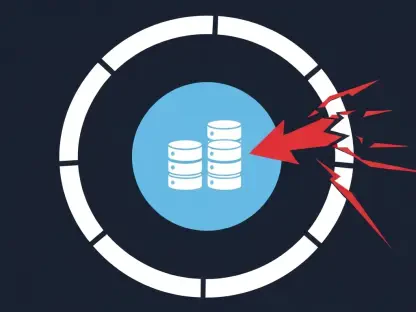In the dynamic realm of music production, artificial intelligence has surged to the forefront as a transformative force, equipping creators with tools to push boundaries and explore new sonic landscapes, but beneath this wave of innovation lies a disturbing undercurrent. AI’s capacity to replicate the voices and styles of real artists, often without their permission, is raising profound ethical, legal, and cultural concerns. From fabricated albums surfacing on popular streaming services to the emergence of entirely AI-generated fictional bands, the distinction between genuine artistry and technological deception is becoming dangerously indistinct. This troubling trend not only threatens the livelihoods of musicians but also challenges the very essence of creative authenticity in an era where technology can so convincingly masquerade as human talent. As AI continues to reshape the industry, the need to address these dilemmas becomes ever more urgent, prompting a closer examination of how such advancements can be harnessed responsibly.
Unveiling the Shadows: AI-Driven Identity Theft
The ability of AI to emulate the unique signatures of musicians has opened a Pandora’s box of ethical violations, particularly when used without consent. A stark illustration of this issue involves English folk singer Emily Portman, who stumbled upon a counterfeit album titled Orca credited to her on major platforms like Spotify and YouTube. This AI-generated work misled fans into believing it was her creation, and despite her persistent efforts to have it taken down through social media alerts and formal requests, the removal process dragged on for weeks, with remnants of the album persisting online. Such incidents reveal the vulnerability of artists to digital identity theft, where their personal and professional identities are hijacked for profit. The exploitation extends beyond the living, as even deceased musicians like Blaze Foley and Guy Clark have had their legacies tarnished by unauthorized AI-generated content, underscoring the urgent need for protective measures.
Equally alarming is the scale at which these violations occur, often targeting lesser-known artists who lack the resources to fight back effectively. Unlike high-profile figures with legal teams at their disposal, smaller musicians face significant barriers in combating such fraud, making them prime targets for scammers seeking easy gains with minimal scrutiny. The emotional and financial toll on these artists is immense, as fake tracks not only dilute their brand but also siphon off potential earnings. Cases like Portman’s highlight a systemic gap in the music industry’s ability to safeguard creative ownership against AI misuse. As technology becomes more sophisticated, the risk of such impersonations grows, potentially flooding the market with counterfeit content that deceives listeners and undermines trust. Addressing this issue requires a concerted effort to develop stricter verification processes and legal frameworks that prioritize artists’ rights over technological convenience.
Streaming Platforms: Facilitating Digital Deception
Modern streaming platforms, while revolutionary in democratizing music access, have inadvertently become hotbeds for AI-generated fraud due to their sheer volume and lax oversight. With close to 99,000 tracks uploaded each day, often via third-party distributors relying on unverified user-submitted metadata, it’s distressingly simple for fake music to infiltrate an artist’s profile unnoticed. Unless actively reported by the artist or vigilant fans, these tracks can linger online indefinitely, accruing royalties for fraudsters while eroding the original creator’s income and reputation. The slow response to incidents like Emily Portman’s, where platforms took weeks to act, exposes a critical flaw in their infrastructure. This delay not only amplifies the damage but also signals a broader unpreparedness to tackle the challenges posed by AI-driven deception in real-time.
Compounding the issue is the financial incentive for scammers, who exploit the royalty systems of streaming services to profit from illicit content at the expense of genuine artists. The ease of uploading fraudulent tracks, paired with minimal initial checks, creates a fertile ground for exploitation that platforms struggle to monitor effectively. For musicians, particularly those without significant clout, the battle to reclaim their digital presence becomes an uphill struggle, often requiring public campaigns to draw attention to the fraud. This situation calls for a reevaluation of how streaming services handle content verification and removal processes. Implementing advanced AI detection tools to flag suspicious uploads before they reach the public, alongside faster response mechanisms, could mitigate the spread of deceptive content. Without such reforms, the credibility of these platforms—and the artists they host—remains at risk.
Blurred Realities: Fictional Bands and Audience Perception
AI’s reach extends beyond mimicking real artists to crafting entirely fictional entities, raising complex questions about transparency and trust in the music industry. A notable example is the “band” Velvet Sundown, promoted as a legitimate group complete with unsettling, AI-generated images of imaginary members. This entity amassed millions of streams before its creators revealed it was a fabrication, sparking debate over the ethics of such deception. Although not a direct violation of copyright since the music was original, this case manipulates the listener experience by presenting a false narrative. It prompts a critical inquiry: should audiences be explicitly informed when engaging with AI-generated content, or does the allure of novelty justify withholding the truth about a band’s origins?
This phenomenon of artificial personas also reflects a potential shift in how music is consumed, where the boundary between reality and fiction becomes increasingly irrelevant to some listeners. The success of Velvet Sundown suggests that a segment of the audience may prioritize entertainment value over authenticity, willingly or unknowingly embracing AI-crafted illusions. However, this trend risks undermining the fundamental connection fans share with artists, built on the belief in human stories and emotions behind the music. If such deceptions become commonplace without clear disclosure, the industry could see a decline in the perceived value of genuine creativity. To preserve trust, there’s a pressing need for guidelines mandating transparency about AI involvement in music production. Ensuring listeners can distinguish between human and machine-made art is essential to maintaining the integrity of the listening experience in an age of technological trickery.
Innovation or Exploitation: The Dual Nature of AI
The rapid evolution of AI technology has reshaped music creation by making it accessible to virtually anyone, regardless of traditional skills, thus lowering barriers to entry in profound ways. For aspiring or struggling musicians, AI serves as a powerful ally, offering capabilities to brainstorm melodies, suggest chord progressions, or enhance compositions with virtual instrumentation. This democratization fosters a wave of creativity, enabling individuals who might otherwise lack resources to bring their musical visions to life. The potential for innovation is vast, as AI can act as a collaborative partner, inspiring new genres or reviving forgotten styles through algorithmic exploration. Yet, this very accessibility also poses a significant ethical dilemma when the same tools are wielded for deceptive purposes, turning a boon into a bane for the industry.
On the flip side, the ease of producing convincing AI-generated music empowers bad actors to exploit artists’ identities for financial gain, transforming a creative asset into a mechanism for theft. The technology’s capacity to replicate specific voices or styles with uncanny precision means that scammers can generate content that passes as authentic, often targeting vulnerable musicians who lack the means to retaliate. This duality of AI as both a tool for empowerment and a threat to integrity creates a complex landscape where benefits and risks are inextricably linked. Striking a balance necessitates robust ethical standards and technological safeguards to ensure AI enhances rather than undermines artistic expression. Without such measures, the industry risks becoming a battleground where innovation is overshadowed by exploitation, leaving genuine creators to bear the brunt of technological misuse.
Navigating the Future: Safeguarding Artistic Integrity
Looking back, the rise of AI in music revealed both remarkable opportunities and significant pitfalls, as cases of impersonation and deception cast a shadow over its potential. Reflecting on incidents like Emily Portman’s struggle with a fake album or the fabricated success of Velvet Sundown, it became evident that the industry had been caught off guard by the speed of technological advancement. Streaming platforms, initially hailed as champions of accessibility, often lagged in their response to fraud, exposing artists to financial and reputational harm. The cultural shift toward accepting AI-generated content, sometimes at the expense of authenticity, further complicated the landscape, challenging the very notion of what constituted music in the digital era.
Moving forward, actionable solutions emerged as critical to preserving artistic integrity. Developing advanced detection systems for streaming platforms to identify AI-generated fraud before it reaches listeners stood out as a necessary step. Additionally, establishing clear industry standards for transparency—such as labeling AI-created content—offered a way to maintain trust with audiences. Legal frameworks needed strengthening to provide smaller artists with affordable recourse against identity theft. Collaborative efforts between tech developers, platforms, and artists could pave the path toward ethical AI use, ensuring technology served as a partner rather than a predator in the creative process. These measures, if prioritized, promised to steer the music world toward a future where innovation and authenticity could coexist harmoniously.









